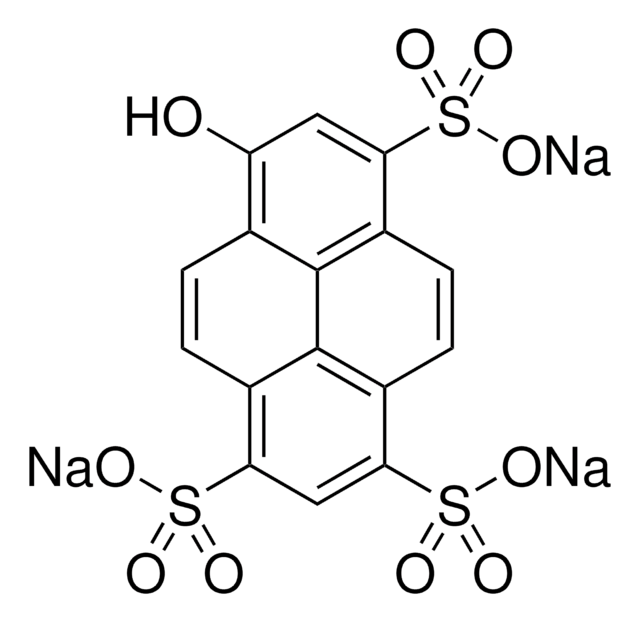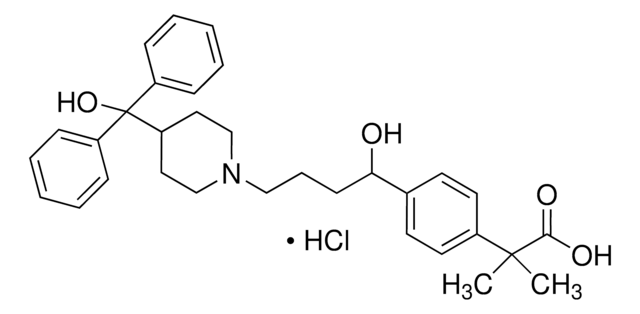T2501
L-Thyroxine sodium salt pentahydrate
≥98% (HPLC), powder
Sinonimo/i:
3-[4-(4-Hydroxy-3,5-diiodophenoxy)-3,5-diiodophenyl]-L-alanine sodium salt, Sodium levothyroxine, T4
About This Item
Prodotti consigliati
Origine biologica
synthetic (organic)
Sterilità
non-sterile
Saggio
≥98% (HPLC)
Stato
powder
Punto di fusione
207-210 (dec.) (lit.)
Solubilità
4 M NH4OH in methanol: 50 mg/mL, clear to hazy, colorless to yellow
Condizioni di spedizione
ambient
Temperatura di conservazione
−20°C
Stringa SMILE
O.O.O.O.O.[Na+].N[C@@H](Cc1cc(I)c(Oc2cc(I)c(O)c(I)c2)c(I)c1)C([O-])=O
InChI
1S/C15H11I4NO4.Na.5H2O/c16-8-4-7(5-9(17)13(8)21)24-14-10(18)1-6(2-11(14)19)3-12(20)15(22)23;;;;;;/h1-2,4-5,12,21H,3,20H2,(H,22,23);;5*1H2/q;+1;;;;;/p-1/t12-;;;;;;/m0....../s1
JMHCCAYJTTWMCX-QWPJCUCISA-M
Informazioni sul gene
mouse ... Cnr2(12802)
rat ... Cnr1(25248)
Cerchi prodotti simili? Visita Guida al confronto tra prodotti
Categorie correlate
Azioni biochim/fisiol
Nota sulla preparazione
Prodotti correlati
Avvertenze
Danger
Indicazioni di pericolo
Consigli di prudenza
Classi di pericolo
STOT RE 1
Organi bersaglio
Thyroid,Cardio-vascular system,Kidney
Codice della classe di stoccaggio
6.1C - Combustible acute toxic Cat.3 / toxic compounds or compounds which causing chronic effects
Classe di pericolosità dell'acqua (WGK)
WGK 3
Punto d’infiammabilità (°F)
Not applicable
Punto d’infiammabilità (°C)
Not applicable
Dispositivi di protezione individuale
Eyeshields, Gloves, type N95 (US)
Scegli una delle versioni più recenti:
Possiedi già questo prodotto?
I documenti relativi ai prodotti acquistati recentemente sono disponibili nell’Archivio dei documenti.
I clienti hanno visto anche
Il team dei nostri ricercatori vanta grande esperienza in tutte le aree della ricerca quali Life Science, scienza dei materiali, sintesi chimica, cromatografia, discipline analitiche, ecc..
Contatta l'Assistenza Tecnica.









